History of Aconcagua
Argentinian ancient history is not well documented but the location of Aconcagua places it within the localities of several of the ancient tribes’ people – the Araucanos, the Aymaras, the Incas and the Mapuche. It is thought that humans first spread from North America into the south around 15,000 years ago but the mountain is noticeably absent from most of the old legends, probably because of the inaccessibility of its high passes and the strong glacial winds which have blown on this mountain for thousands of years and which have prevented ordinary people from making the mountain their own. However, there is evidence that the Incas held mountains in high regard, climbing them to offer sacrifices to their Gods from the tops so they may not have been as inaccessible as was initially thought. In 1947 the remains of a guanaco were discovered between the two summit peaks of Aconcagua. It is thought that the animal was brought there as a sacrifice and the ridge between the two peaks has been so named, Cresto del Guanaco, ever since.
Much like the explorers of the Himalayas, the passes around Aconcagua came into play during military expeditions. In 1561 the Chilean captain general of Santiago, General Mendoza, sent an expedition over the Andes and founded the city of Mendoza, which he named after himself. Thus, Mendoza was initially a province of Santiago and the cultural and commercial ties that grew between the two cities at this time are still in place today. Later in 1817 during the time of Spanish colonial rule, General Don José de San Martin crossed the high frontier passes between Argentina and Chile, traversing the region of the Andean giants: Aconcagua, Mercedario and Tupungato. With a numerous army of more than 5300 men, 9280 mules and 1600 horses, he passed over the mountain at around 4000m and entered neighbouring Chile, liberating the land from 300 years of Spanish rule.
In 1835 the exploratory ship of Charles Darwin first arrived in Valparaiso. He was one of the first scientists to facilitate data about Aconcagua and its surroundings. The exploration of Aconcagua is still ongoing and there are areas of the mountain which are still largely unreachable. The famous South Wall has a height of 3000m and is scaled in very steep degree gradients. It is extremely difficult to tackle and requires the application of an artificial scale above 6000m. On the 25th February 1954 when the Frenchmen Pierre Lesueur, Adrien Dagory, Edmund Denis, Lucien Berardini, Guy Poulte and their leader Ren Ferlet opened the central spur route directly to the top, it was considered as one of the greatest performances of mountaineering technique of all time. In 1984, Frenchwoman Marie Bouchard became the first woman climber to conquer the South Wall. Before then, in 1982, a Yugoslav team led by Zarko Trusnovec, showed defiant spirit and a fine climbing technique by ascending via the "direttissima" straight up to the south summit (south-south).
Early Pioneers
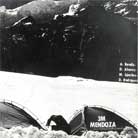 |
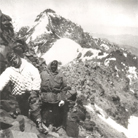 |
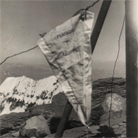 |
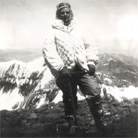 |
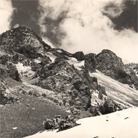 |
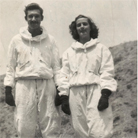 |
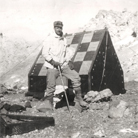 |
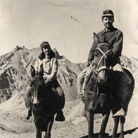 |
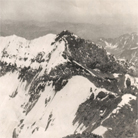 |
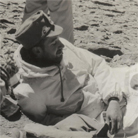 |
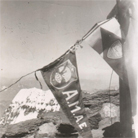 |
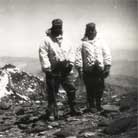 |
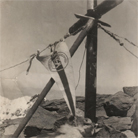 |
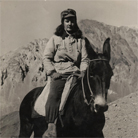 |
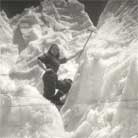 |
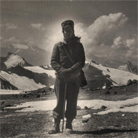 |
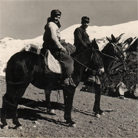 |
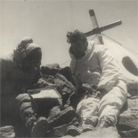 |
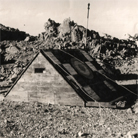 |
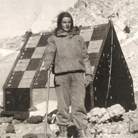 |
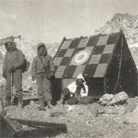 |
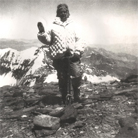 |
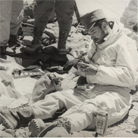 |
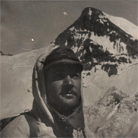 |
 |
Fascinating Discovery
In 1982, a 500 year old Inca mummy was discovered at 5200m in altitude. The body, belonging to a young male, is believed to have been sacrificed on the site. Inside the funerary bundle several religious offerings were found such as braided fibre sandals, a bag full of cooked beans, a cloak embroidered with feathers and several figurines. It became clear that such items were symbolic as the supplies needed for the trip to the other world. Upon deeper surveying, two partially destroyed semi-circular stone walls were found around the mummy, as well as a stone circle and there are other traces of Inca civilisation and culture near the summit which leave the ancient history of this great mountain rather in the dark.
The Origin of the Name ' Acongagua'
It must be presumed that the early natives noted the great size of Aconcagua and the meanings and origins of its name reflect this. Its name has several possible origins: from the Aymara language, Kon-Kawa (Snowy Peak); the Chilean Araucano may have named it after one of their rivers, Aconca-Hue (“that which comes from the other side”); or from the Quechua, Akon-Kahuak, which means the Sentinel of Stone. The latter is the most widely accepted translation of the name today.
First Person to Climb Aconcagua
The first attempt to reach the summit of Aconcagua was made in 1883 by Paul Güssfeldt, a German mountaineer who allegedly bribed some local men to act as porters for him by claiming there was treasure on the mountain. With only poor equipment the team traced out a path and Gussfeldt was able to reach 6560m in height during this primary attempt, but was forced to descend only 500m from the summit because of dangerously high winds.
The first recorded successful ascent was made several years later in 1897 by a team led by the British man, Edward Fitzgerald. He and 8 men, guided by the Swiss Mathias Zurbriggen, took an alternative route to the one made by Gussfeldt, carving out what is now known as the Normal Route. The final ascent itself was made by Zurbriggen alone, after Fitzgerald had to give up his own ascent at 6700m due to altitude sickness. At that time there were no mountain huts, GPS systems or clear paths, just the immensity of the mountain, the cold and wind.
The first Argentinian to climb Aconcagua was Lieutenant Nicolas Plantamura of the Army of Argentina who reached the summit as part of an Italian expedition in 1934. Other routes were discovered around this time, primarily the Polish Glacier Route in 1934 which was named after a successful Polish expedition which explored the virtually unknown Cordón de la Ramada. The group – Konstanty Narkievitcz-Jodko, Stefan Osiecki, Wictor Ostowski and Stefan Dasyinski - ascended the Mercedario for the first time (6800m) and entered the Aconcagua zone by the deep pass of Relinchos and the Vacas Valley on the east side. They open a new route to the summit and from then on this was named "The Polish Glacier".
In 1944 the first ascension by a woman was achieved by Adriana Bance of France. Unfortunately, however, she died during her descent. In 1952, a 21 year old woman, Nellie Noller became the first Argentinian female to reach the summit, and in 1953 Frederic Marmillod, his wife Dorly, and Fernando Grajales and Lieutenant Francisco Gerónimo Ibáñez from Mendoza found another way, the South West edge, which remained further untrodden until 1978. In 1954 a French team took the route up from the Horcones Valley and established a camping area under the south face which is now known as Plaza Francia. Six members of the team reached the summit a month later.
